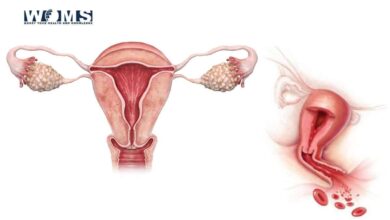Fresh vs Frozen Embryo Transfer Success Rates

When it comes to fertility treatments, understanding the options available and their respective success rates is crucial for individuals and couples seeking to start a family. So, you might wonder about Fresh vs Frozen Embryo.
In recent years, both fresh and frozen embryo transfers have become common approaches in assisted reproductive technology (ART). In this comprehensive guide, we will explore the differences in success rates between fresh and frozen embryo transfers, debunking myths along the way and addressing questions about factors like female masturbation’s impact on fertility.
Fresh vs Frozen Embryo Transfer: What’s the Difference?
Before diving into success rates, it’s essential to understand the fundamental differences between fresh and frozen embryo transfers.
Fresh Embryo Transfer:
In a fresh embryo transfer, eggs are retrieved from the woman’s ovaries during the same cycle in which the embryos are created through In vitro fertilization (IVF). Once the embryos are cultured for a few days, the most viable one or more are selected and transferred to the woman’s uterus.
Frozen Embryo Transfer:
In contrast, a frozen embryo transfer involves creating embryos through IVF but then freezing them for later use. These frozen embryos can be stored for several years until the intended time of transfer. When ready, the selected frozen embryos are thawed and transferred to the uterus in a subsequent cycle.
Success Rates: Fresh vs Frozen Embryo Transfer
Now, let’s examine the success rates of fresh and frozen embryo transfers, considering factors such as age, underlying medical conditions, and other variables that influence fertility.
Fresh Embryo Transfer Success Rates:
Fresh embryo transfers are often associated with slightly higher success rates in younger women with a favorable ovarian response. This is because the uterine environment during a new cycle closely mimics the natural conditions of the menstrual cycle.
However, fresh embryo transfers can sometimes be affected by ovarian hyperstimulation syndrome (OHSS), a condition that occurs when the ovaries over-respond to fertility medications. OHSS can negatively impact implantation and reduce success rates.
The success of fresh embryo transfers can also be influenced by the woman’s age. In older women, fresh embryo transfer success rates tend to be lower due to age-related declines in egg quality and ovarian reserve.
Frozen Embryo Transfer Success Rates:
Frozen embryo transfers offer distinct advantages, particularly for older women or those with certain medical conditions. By freezing and thawing embryos in a subsequent cycle, factors like OHSS are eliminated, potentially improving the chances of successful implantation.
However, it’s worth noting that some women may experience mild discomfort, including leg pain after a frozen embryo transfer. This discomfort is typically temporary and can be attributed to the medications used during the treatment, the transfer procedure itself, or the psychological stress associated with the process. It’s essential to communicate any such concerns with your fertility specialist, as they can provide guidance and reassurance.
Additionally, the timing of a frozen embryo transfer can be better controlled, allowing for precise synchronization of the embryo’s development with the uterine lining.
Frozen embryo transfer success rates are generally consistent across different age groups, making it an attractive option for women over 35.
Debunking Myths and Addressing Concerns: Female Masturbation and Fertility
In the realm of fertility, various myths and misconceptions persist, often causing unnecessary concern or confusion. One such myth is that female masturbation can negatively impact fertility or result in the loss of sperm within the reproductive tract.
Conclusion
Understanding the differences in success rates between fresh and frozen embryo transfers is essential for individuals and couples embarking on the journey of assisted reproduction. While fresh embryo transfers may offer advantages in specific situations, frozen embryo transfers have emerged as a valuable option with consistent success rates, especially for older women or those with specific medical considerations.
Moreover, it’s important to dispel myths surrounding fertility, such as the misconception that female masturbation negatively affects the chances of conception. In reality, masturbation does not hinder fertility, and the female body is well-equipped to support the journey of sperm toward the egg.
As you explore fertility treatment options, consult with a qualified fertility specialist who can provide personalized guidance based on your unique circumstances, ultimately increasing your chances of achieving the dream of parenthood. If you experience discomfort or have concerns during the process, don’t hesitate to discuss them with your specialist for appropriate guidance and reassurance.
So, hope this article has given you the information you require regarding fresh vs frozen embryo.
Frequently Asked Question(FAQ):
What is the successful rate of fresh embryo transfer?
In research carried out to find successful pregnancies done through fresh and frozen embryos, it was found that in a total of 280 cases, only 111 cases that used fresh embryos showed successful pregnancy.
In which embryos IVF is seen as more successful?
In a study done in 2020, it was seen that IVF was more successful when it was done using fresh embryos compared to frozen embryos.




